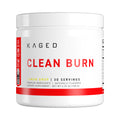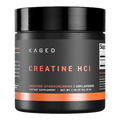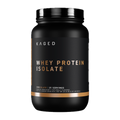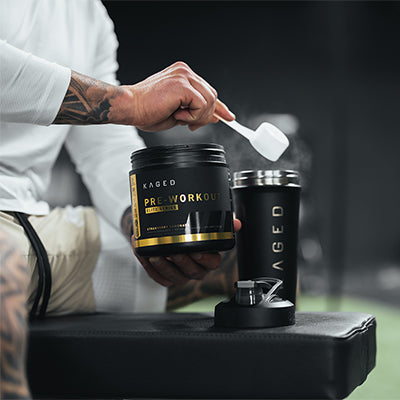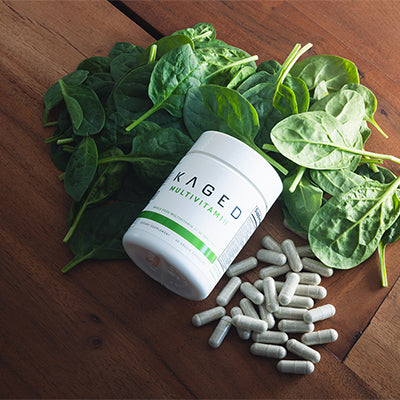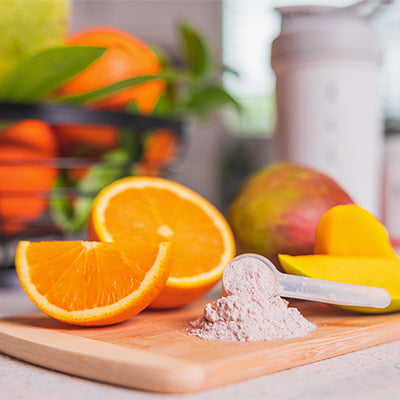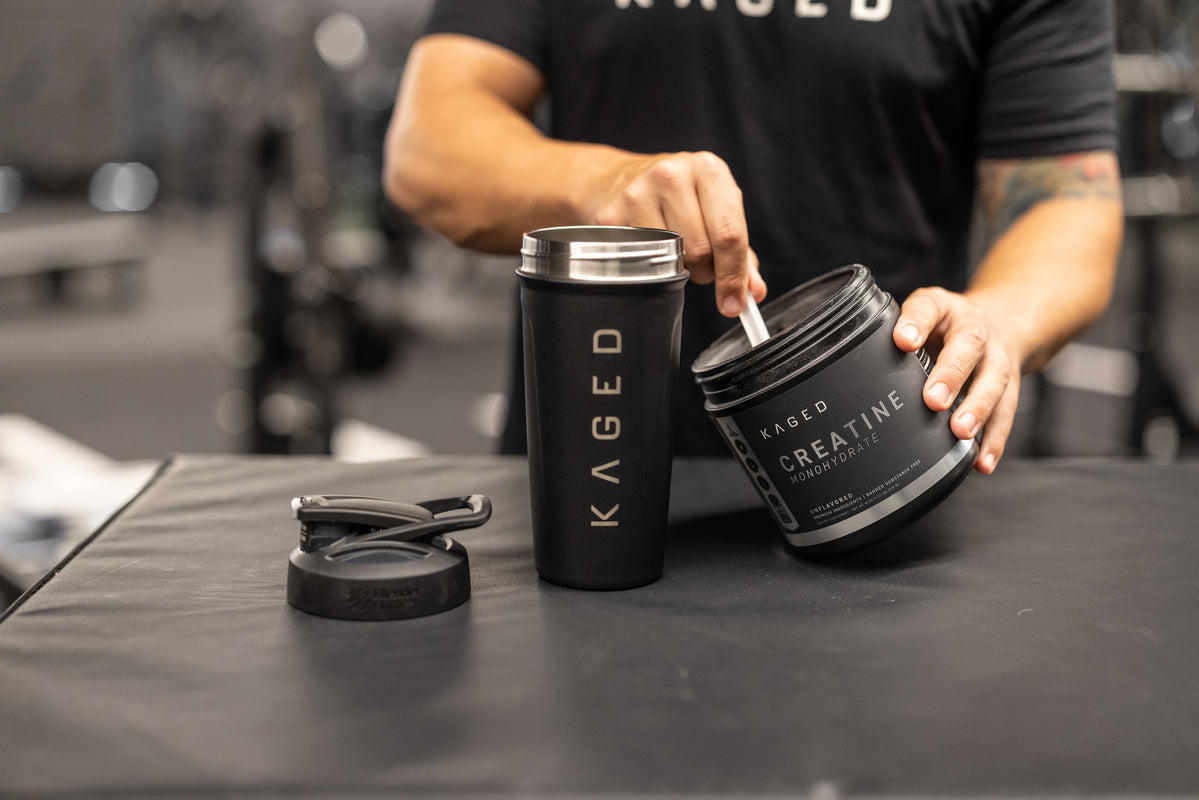Creatine is a naturally occurring amino acid-like compound found in muscle cells, playing a crucial role in the production of energy during high-intensity, short-duration exercises like sprinting and weight lifting.
It’s backed by decades of research and is one of the most well-researched supplements in existence. It has well-researched benefits for supporting muscle growth, improving strength, leading to better recovery in-between sets.
Creatine does all this by increasing the phosphocreatine stores in your muscles. Phosphocreatine is a form of stored energy in the cells that helps to regenerate ATP, the main source of energy in our body. When you exercise, ATP is broken down to produce energy. By increasing your phosphocreatine stores through creatine supplementation, you can produce more ATP during high-intensity exercise.
Among The Countless Creatine Supplements, You’ll Find Powders and Pills
We’re here to help you choose which one is best for you. In this article, we will delve into a detailed comparison of these two forms, examining factors such as dosage requirements, cost, solubility, flavor options, and personal convenience to help you decide.

Here at Kaged, we have both powder and capsules options, with both the classic creatine monohydrate and the more soluble creatine HCl. That’s because we believe supplementation, just like nutrition and training, is not one-size-fits-all. It should be personalized based on your needs, goals, and preferences.
Start with Dosage: How Much Do You Want to Take?
Once you have that number, you can decide if you want to be swallowing that many pills.
Creatine supplementation is backed by extensive research, with a consensus among health professionals and fitness experts that a daily intake of 3-5 grams is optimal for enhancing muscle strength and growth.
Note, this can vary based on factors such as how much creatine you get in your diet, and on your lean muscle mass. If you eat a lot of red meat, your muscles may become more saturated with creatine without supplementation. However, if you don’t eat much red meat, you’ll probably benefit from closer to 5g.
If you have more lean muscle mass, you’ll have more muscle to saturate with phosphocreatine, so your dose could be on the higher end and vice versa. Based on these factors, you can decide your personal, optimal dose for supplementation.
Dosage Translation to Pills: Creatine Pills Contain ~750mg Each
This is true in our creatine supplements, both Creatine HCl and our high-absorption Creatine Monohydrate Elite, because 750mg strikes a balance between pill size and quantity.
If the pills are packed with a full gram or more, it can be uncomfortable to swallow. Any less than 750mg, and you have to take more pills to get an effective dose.
With Pills, You’ll Need to Take 4-7 Per Day to Hit an Optimal Dose
At 750mg per pill, you’ll hit 3g with a total of four pills. If that already sounds unappealing, then you’ll want to consider powder options.
If that sounds totally fine for you, and you don’t want to deal with mixing creatine with other drinks, then you can go for the capsules.
Taste Preference: Unflavored, Flavored, or Pills
Unflavored creatine powder on its own doesn’t taste good
If you want to get unflavored creatine powder, you need to plan on taking it with something. The old-school bodybuilding advice is to drink it with juice, but this provides a ton of potentially unwanted calories.
Instead, consider mixing it with your favorite electrolyte drink, like Kaged Hydra-Charge, which has less than 1g of sugar.
You can also add a scoop to smoothies, yogurt bowls, or protein shakes. The point is, if you take unflavored creatine powder, you have to mix it in something because it tastes bad.
Consider a Flavored Creatine Drink
For those who don’t want to deal with mixing drinks and don’t want pills, we have our patented Creatine HCl available in fruit punch and lemon lime.
If you want to avoid mixing drinks altogether, then you have the pills.
Cost Comparison: Are Creatine Powders More Cost Effective?
You may also want to look at cost. Across brands, this will vary. We can only speak to what we offer at Kaged.
The most cost-effective creatine will be our tried-and-true Creatine Monohydrate unflavored powder.

For $29.99, you get a tub with 500g of pure creatine monohydrate. If you take 5g per day, that’s a 100-day supply, so you’re looking at less than $10/month on average for your creatine.
Our Creatine Monohydrate Elite and Creatine HCl both come in powder and capsule versions. For these products, the price per gram is exactly the same, so you’re not paying more for capsules. Why do these products cost more? Well, they each have certain advantages that may make them better products for you. We dive into the benefits of Creatine HCl here.
Creatine Monohydrate Elite includes a patented black pepper extract which has shown to support creatine absorption.*

For more on these products, you can check out our article on creatine monohydrate vs HCl.
Other Considerations When Deciding Between Creatine Powder and Pills
We’ve covered the big questions like dosage, convenience, and cost. Here are a few other things to keep in mind though.
Portability of Pills: Generally Better for Traveling
Pills: One of the most significant advantages of creatine pills is their portability. Pills are compact, require no preparation, and can be taken anywhere with ease.
If you travel a lot, you can bring capsules in your carry-on bag through airport security, opened powder is a different conversation and TSA typically is a pain in the butt about it.
Ease of Adjusting Dosage with Powder: Better for Loading Phases
It’s easy to take more of the powder if you’d like. This is specifically relevant during the creatine loading phase.
If you want to get the benefits of creatine sooner, you can take 4 servings of 5g for the first week. During this via capsules means you’ll be taking over a dozen creatine capsules a day.
The powder also allows you to fine tune the exact dose you want.
Personal Preference
The choice between powder and pills often comes down to personal preferences and lifestyle considerations:
Pill Quality
If you do choose to go with pills, make sure you get vegetarian over gelatin.
Taste and Texture: Some individuals prefer the ritual of mixing their creatine with a favorite drink. Others might dislike the texture or the extra step involved in preparing creatine drinks and opt for the simplicity of pills. (If you dislike the texture of regular creatine monohydrate, Creatine HCl is for you.)
Dietary Preference: Our flavored Creatine HCl powder contains less than 1g of sugar and no artificial colors or flavors. However, it’s worth pointing out that if you look for flavored creatine elsewhere, you may see artificial flavors or sugars you don’t want.
Looking for High-Quality Creatine Powders and Pills You Can Count On?
Ultimately, the decision between creatine powder and pills hinges on balancing convenience with your personal preferences. We’re not here to push one as superior to the other. All of these ways of taking creatine have proven to work, and it has been shown time and again that what’s most important is that you take it.
At Kaged, all of our creatine products are banned substance free and informed sport certified, gluten-free, and suitable for vegans. We’re confident that whether you choose powder or pill, flavored or flavored, we have the perfect creatine for you.

